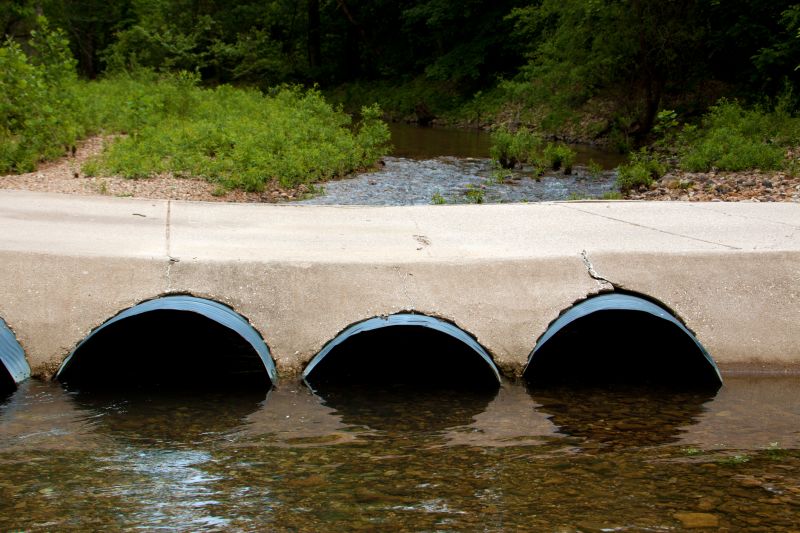Leading Products for Driveway Culvert Repairs You Can Trust
Explore top-rated solutions designed to restore and strengthen your driveway culverts with durability and ease.
 Driveway culverts play a crucial role in managing water flow and preventing erosion around a property. When a culvert becomes damaged or clogged, it can lead to significant issues such as flooding, soil erosion, and driveway instability. Repairing or replacing a culvert requires selecting appropriate products that can withstand the elements and provide durable, long-lasting performance. Various repair products are available, ranging from flexible patching materials to heavy-duty pipes and sealing solutions, each suited to different types of damage and installation needs.
Driveway culverts play a crucial role in managing water flow and preventing erosion around a property. When a culvert becomes damaged or clogged, it can lead to significant issues such as flooding, soil erosion, and driveway instability. Repairing or replacing a culvert requires selecting appropriate products that can withstand the elements and provide durable, long-lasting performance. Various repair products are available, ranging from flexible patching materials to heavy-duty pipes and sealing solutions, each suited to different types of damage and installation needs.
Top Overall Option
Heavy-Duty Culvert Pipe and Reinforcement Kit
This comprehensive kit includes durable corrugated pipes, sealants, and reinforcement materials designed for extensive culvert repairs. Its robust construction aims to withstand heavy water flow and soil pressure, making it suitable for various driveway repair projects. The kit's versatility allows for customization based on specific repair needs, providing a reliable solution for maintaining proper drainage systems.
Types of Products For Driveway Culvert Repairs
Flexible Pipe Sealants
Used to seal minor leaks and cracks in culverts, providing a waterproof barrier to prevent further deterioration.
Corrugated Plastic Pipes
Commonly used for replacing damaged sections, these pipes are lightweight, durable, and easy to install.
Rubber Gaskets and Couplings
Designed to connect pipe sections securely and prevent leaks at joints.
Concrete Pipe Segments
Heavy-duty segments suitable for large-scale repairs and structural reinforcement.
Epoxy and Resin Fillers
Ideal for filling cracks and minor holes, providing structural support and water resistance.
Drainage Grates and Covers
Used to cover culverts and prevent debris from clogging the system.
Reinforced Geotextile Fabrics
Placed around culvert pipes to provide additional stability and prevent soil erosion.
Hydraulic Cement
Suitable for sealing leaks and cracks in concrete or masonry culverts.
Pipe Supports and Anchors
Help stabilize pipes and prevent shifting under load or water flow.
Drainage Pipe Fittings
Connectors, elbows, and tees that facilitate complex culvert configurations.
Soil Stabilization Meshes
Used for reinforcing soil around culverts and preventing erosion.
Waterproof Coatings
Applied to culvert surfaces to enhance water resistance and extend lifespan.
Drainage Pumps
Assist in removing accumulated water during repairs or flooding events.
Grout and Mortar Mixes
Fill gaps and secure pipe joints, providing additional structural integrity.
Flexible Repair Wraps
Wrap around damaged sections for quick, temporary or semi-permanent repairs.
Drainage Basin Inserts
Help manage water entry and prevent debris entry into culverts.
Popular Choices
Widely used for their ease of installation and adaptability in various repair scenarios.
Popular for sealing cracks and joints effectively in culvert systems.
Trusted for creating secure connections between pipe sections during repairs.
Commonly selected for sealing leaks in concrete culverts and structures.
Popular for their ability to prevent debris entry and facilitate water flow.
Chosen for quick fixes and temporary repairs around damaged sections.
Often used to reinforce soil and prevent erosion around culverts.
Selected for stabilizing pipes in high-load or high-flow conditions.
Facilitate customized culvert configurations and repairs.
Helpful in managing water during repair projects or flooding events.
Popular for filling cracks and minor holes in culvert structures.
Applied to extend the life of culverts by preventing water ingress.
Understanding the specific requirements of your culvert repair is essential. Factors such as the culvert size, material, and the extent of damage influence the choice of products. For minor cracks or leaks, sealants and patching compounds may suffice. For more extensive damage, replacing sections with durable piping or reinforcement materials might be necessary. Proper installation and selecting compatible products ensure the longevity and effectiveness of the repair, helping maintain proper drainage and prevent future issues.
It is also important to consider ease of installation and compatibility with existing infrastructure. Some products are designed for quick application and require minimal tools, making them suitable for DIY repairs. Others may necessitate professional installation to guarantee proper fit and performance. Additionally, selecting products with appropriate load-bearing capacity and resistance to water and soil conditions will contribute to a successful, long-term solution. Regular inspection and maintenance, combined with the right repair products, can significantly extend the lifespan of your driveway culvert system.
Key Buying Considerations
- Assess the extent of damage to determine whether repair or replacement is needed.
- Identify the appropriate size and diameter of culvert pipes for your specific system.
- Choose materials compatible with existing infrastructure, such as concrete, plastic, or metal.
- Consider the load-bearing requirements based on traffic and soil pressure.
- Evaluate the water flow volume and velocity to select suitable pipe and sealant types.
- Determine if quick-installation products are necessary for DIY repairs or if professional help is preferred.
- Check for corrosion resistance and durability to withstand environmental conditions.
- Ensure products are rated for long-term performance and resistance to soil and water exposure.
- Look for options that include sealing, reinforcement, and support components for comprehensive repair.
- Consider the ease of access and space constraints around the culvert site.
- Review compatibility with existing drainage systems and fittings.
- Prioritize products with clear installation instructions or professional support options.
- Evaluate the need for temporary versus permanent repair solutions.
- Factor in budget constraints while balancing quality and longevity.
- Inspect for product certifications or standards that ensure safety and performance.
